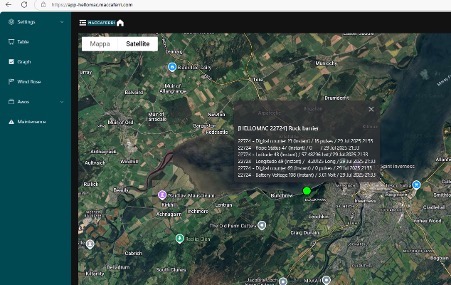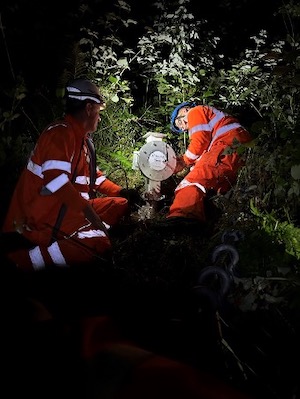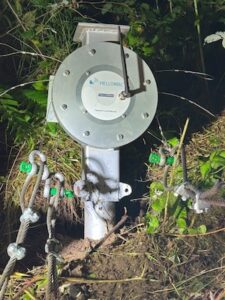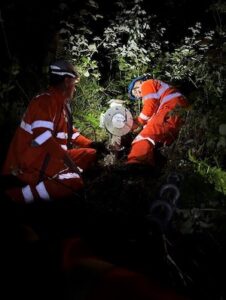 View the Maccaferri entry on BPindex
View the Maccaferri entry on BPindex
Maccaferri Ltd Completes First UK Installation of Hellomac Geo
 Maccaferri Ltd is proud to announce the successful installation of Hellomac Geo, a pioneering real-time monitoring and alert system, in the United Kingdom. With numerous installations already operating worldwide, the UK is now the latest market to benefit from Hellomac Geo’s proven technology.
Maccaferri Ltd is proud to announce the successful installation of Hellomac Geo, a pioneering real-time monitoring and alert system, in the United Kingdom. With numerous installations already operating worldwide, the UK is now the latest market to benefit from Hellomac Geo’s proven technology.
Natural hazard and rockfall protection systems are widely used across the UK to safeguard people, infrastructure, and critical assets from potentially catastrophic events. However, their effectiveness depends on frequent inspections to confirm whether impacts have occurred, an approach that is both time-consuming and costly.
Hellomac Geo transforms these systems into “smart” solutions. Powered by Internet of Things (IoT) technology, it provides real-time monitoring and instant alerts to asset managers when an event exceeds the system’s serviceability threshold. This targeted approach ensures that inspections and maintenance are only carried out when truly necessary, delivering significant cost and operational efficiencies.
In July 2025, Maccaferri, in partnership with Network Rail and Amco Giffen, installed the UK’s first Hellomac Geo system at Delmore, Inverness. The system was deployed on a chain link debris flow barrier designed to protect the Inverness–Wick railway line from hillside debris. Historically, this site required monthly inspections, often involving disruptive railway line blocks. With Hellomac Geo, successfully deployed in major rail and infrastructure projects around the world, Network Rail asset managers will now be alerted only when debris levels reach a critical point, allowing maintenance to be planned proactively and efficiently; minimising disruption to rail services.
Key Benefits of Hellomac Geo:
- Real-time, remote monitoring with instant impact alerts
- Fully wireless design — no mains power required
- Guaranteed coverage via roaming GSM or satellite connectivity
- Free desktop and mobile app monitoring software
- Data integration via API into existing asset management platforms
- Lightweight, quick installation — even in remote locations
- Cost-effective, 24/7 monitoring without routine on-site inspections
Hellomac Geo marks a major step forward in the digitisation of natural hazard protection systems in the UK, offering infrastructure owners and operators a smarter, more sustainable approach to safety and asset management.
Connor Gillan, Network Rail Scotland’s Works Delivery Project Manager, made the following comments following the successful installation:
“Network Rail Scotland worked with Maccaferri Ltd and Amco Giffen on the first installation of HELLOMAC Geo in the UK at Delmore on the Inverness to Wick line. This site has often needed regular inspections because of debris building up in the interceptor barriers, with the risk of it reaching the track and affecting services.
HELLOMAC Geo now gives us an early warning system that alerts us when debris builds up to a critical level. This means we can act quickly when needed and cut down on unnecessary inspections. At a remote location like Delmore, that saves both time and costs and avoids line blocks that can disrupt train services.
The system also helps us take a more proactive approach to asset monitoring. We can plan maintenance only when it’s needed, making better use of resources and improving the resilience of the railway in Scotland. HELLOMAC Geo shows how new technology can support the way we manage earthwork and rockfall risk across the network.”
“The arrival of Hellomac Geo in the UK marks a significant step forward in our mission to digitise natural hazard protection systems worldwide”, said Matt Showan Managing Director at Maccaferri Ltd. “Already adopted in a wide range of international projects, the technology combines real-time monitoring with cost-effective efficiency, transforming the way asset managers respond to risk. By working with Network Rail on this first UK deployment, we are showing how global innovation can directly strengthen national infrastructure, improve safety and reduce operational costs.”







